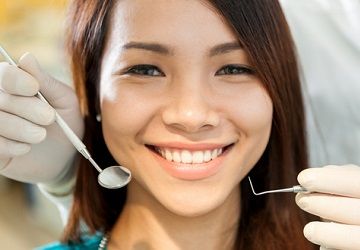Patients Receive Safe, Effective Care in 'Virtual Dental Homes'
In a study conducted by the University of the Pacific, virtual dental homes were shown to help keep patients healthy without a traditional visit to the dentist.

With technological advances, patients are seeking faster, more accessible healthcare outside of the traditional practice setting. This trend is not isolated to medical facilities, and in fact teledentistry might be able to bring dental care to patients that may not have access to it otherwise. In a study conducted by the University of the Pacific, “virtual dental homes” were shown to help keep patients healthy without a traditional visit to the dentist.
The study took place over a six-year period, and involved a system created by the Pacific Center for Special Care, a program of the University’s Arthur A. Dugoni School of Dentistry. More than 3,000 patients in California were evaluated using the system, and more than $5.5 million in federal, state and other grants were used to support the project.
The teledentistry system uses technology to link specially trained dental hygienists in the community to dentists in offices and clinics. Since the project began, virtual dental homes have been placed in 50 preschools, elementary schools, community centers, senior centers, nursing homes, and residential care facilities for the disabled throughout California. The results of the 6-year demonstration showed that teledentistry services in these locations was effective in helping to prevent and treat dental health problems onsite, while also bringing prevention education to all patients. The research was also able to show clear benefits regarding dental services provided to children and communities that otherwise would likely go without.
There is now a bill before the California state legislature which proposes to provide $4 million to expand virtual dental homes statewide. The measure, AB 648, would provide more community-based sites and provide access to preventative and basic dental care using the same teledentistry model.
In California, 32 out of its 58 counties have too few dentists to serve children enrolled in Medi-Cal, the state’s version of the Medicaid program that provides healthcare services to low-income individuals and families. In California, 24% of all children finish elementary school without ever seeing a dentist, and, in 2013, 41% of children eligible for Medi-Cal received no dental health services at all.
Due to the success of the virtual dental home study, Oregon, Hawaii, and Colorado have also implemented pilot teledentistry systems. The hope is that, by bringing such dental services to communities, patient suffering and school and work absenteeism can be reduced or prevented in the millions of people with no access to a dentist.
ACTIVA BioACTIVE Bulk Flow Marks Pulpdent’s First Major Product Release in 4 Years
December 12th 2024Next-generation bulk-fill dental restorative raises the standard of care for bulk-fill procedures by providing natural remineralization support, while also overcoming current bulk-fill limitations.